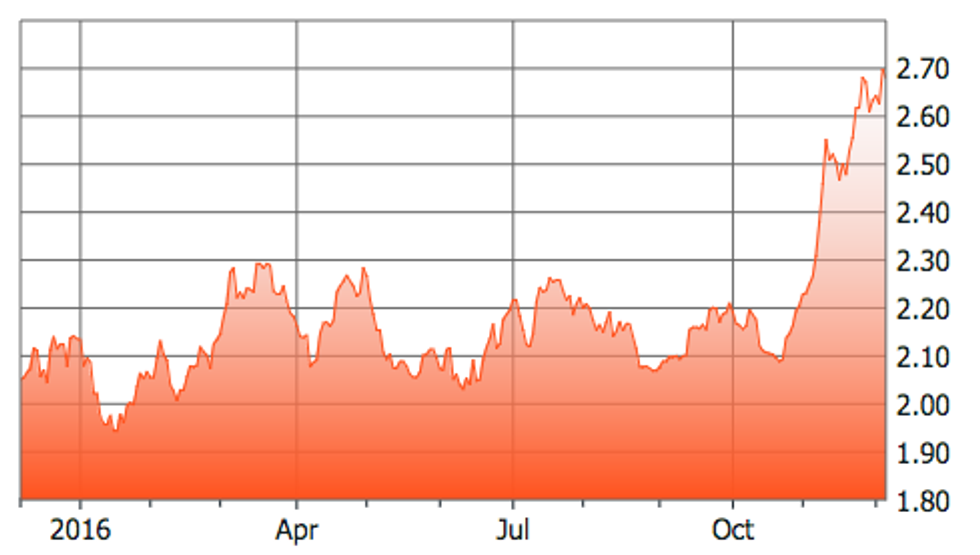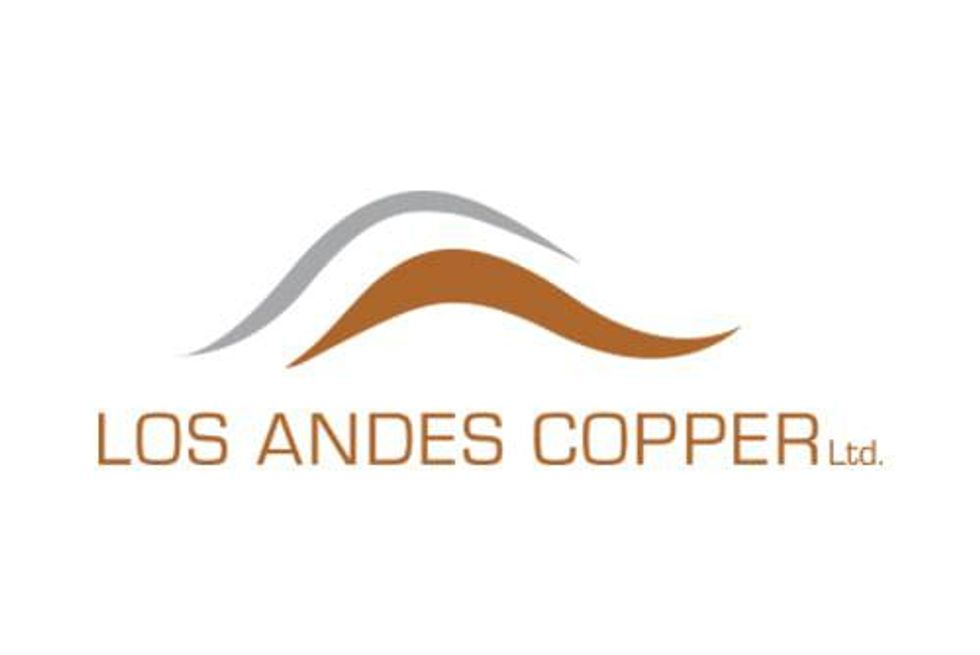Copper Price Forecast 2017: Goldman Sachs Running with the Bulls

Global investment bank Goldman Sachs has declared its bullish sentiment on the red metal. Are others set to follow suit? Read on for what other industry participants had to say about the future of copper prices.
The surge in copper prices in the latter part of 2016 brings cautious optimism to investors and industry participants alike. In December, global investment bank Goldman Sachs dramatically changed to a bullish sentiment on the red metal, after holding a bearish sentiment since 2015.
In the second half of 2016, big events rattled markets and shook up copper prices: Benchmark copper was up after the Brexit announcement, copper prices surged after Trump’s win in the US election, and a 16-month high of $2.62/lb was reached in November.

The global copper market
The copper price dipped to a low of $1.93/lb on January 19, but the red metal has gained back some ground in the latter half and is still sitting well below the $3-per-pound mark–largely due to a decrease in demand growth from top consumer China.
According to the most recent report from the US Geological Survey (USGS), global copper production increased by 200,000 tonnes for a total of 18.7 million tonnes in 2015, despite reported production cuts from major miners.
The International Copper Study Group expects that world mine production will remain unchanged in 2017 after a 4 percent increase in 2016.
The Wall Street Journal quoted Chris LaFemina, an analyst at Jefferies, as saying that the global copper market is expected to shift from a marginal oversupply in 2016 to flat in 2017 with a slight deficit in 2018. LaFemina also mentioned that the copper market has been in surplus in the last seven years.
Copper price forecast according to analysts
Sprott’s Rick Rule says that based on the basics of supply and demand, the rally in copper prices is a false one. He explained to us in an interview that, “ You come out of the bear market one of two ways: one is demand creation, that’s where the very low price of the commodity generate so much utility that the market takes care of itself.”
David Morgan, on the other hand, remains to be bullish on the precious metals, but says, “Dr. Copper is called Dr. Copper for a reason. It’s got a PhD in economics, and if we see an increase in the copper price it’s very much telling us in real terms that there is further industrialization going on.”
Thomson Reuters’ Erica Rannestad explained to us that China is a big driver of the copper price, since it accounted for nearly 46 percent of consumption in 2016. She says, “The slowdown in growth in China will translate to slower growth in copper demand.” She adds, “The copper market is expected to realize a surplus in 2017, similar to levels seen in 2016, which will weigh on the price.”
In an emailed note, Haywood Securities Analyst Stefan Ioannou said, ”We are pleased to see copper rallying. Miners are benefitting as (Chinese) smelters are aggressively buying concentrate to fill capacity. However, we remain cautious over the coming months until the ultimate fate of said refined copper output gains clarity …namely as to whether it is consumed by infrastructure demand or ends up in warehouses.”
He says further, “Haywood’s formal US$2.25/lb 2017 estimate is arguably conservative in the context of recent price performance and base metal market sentiment. Nevertheless, we continue to maintain a strong medium- to longer- term outlook for the metal as a supply-demand balance emerges on the back of a lack of new timely mine development and the inherent increased cost of sourcing production from lower grade ores.”
Goldman Sachs announced a bullish sentiment, expecting prices to rise to $6,200 over the next six months, or roughly $2.81/lb. Its previous six-month call was $4,800 or $2.18/lb. The investment bank conceded, “The rally in copper prices over the past two months was in sharp contrast to our more bearish expectations.” Goldman Sachs is also expecting a decline in mine supply by 0.4 percent in 2017 compared to a previous forecast for 1 percent growth. Goldman analyst Max Layton also stated that improved supply and demand fundamentals contributed to the surge in copper prices, and he sees it continuing into H1 of 2017.
FocusEconomics’ Consensus Forecast stated that copper has been suffering because of a glut in the market, and that China’s strengthened economics improved the demand outlook for copper, and consequently boosted prices. Out of 10 analysts surveyed, all are taking a “wait-and-see approach”. The December report puts individual forecasts for Q1 2017 at a lowest of $4,200 per metric ton, and at a maximum of $5,600 per metric ton. Other price predictions included:
ABN AMRO – $5,600
Macquarie – $5,350
Commerzbank – $5,200
JPMorgan – $4,900
BMO Capital Markets – $4,630
Deutsche Bank – $4,400
Society Generale – $4,200
Industrialization or a glut in the market?
Back in August when Trump was on the campaign trail, Bloomberg reported that his plan was to rebuild US infrastructure “at least double” the amount that Hillary Clinton declared, which was estimated at $275 billion over five years.
Rannestad argues that even if Trump indeed fulfilled his promise of increasing infrastructure spend, it would not have a huge impact on the copper price and will not take effect next year. She said, “since the US accounts for less than 10% of consumption per annum. This is not expected to impact the price in the medium term like it did transiently in November.”
Commerzbank assumes the same outlook position. In a research note sent to investors, they stated that they see considerable correction in copper’s immediate future, and their copper price forecast is, “The copper price should therefore settle down above the $5,000 per ton mark ($2.50/lb) and climb to $5,600 per ton ($2.80/lb) by the end of 2017.”
Investor takeaway
Whether or not Trump makes good on his promise of an increased infrastructure spend, it seems that copper is up for a better year ahead. Analysts and key industry players both agree that although a correction in the copper price is imminent, Dr. Copper may be signalling that the “mining sector is officially out of intensive care.” Certainly, Goldman Sach’s turn from bearish to bullish on copper speaks volumes on the future of the red metal as well.
As Ioannou stated, 2017 may see an emergence in supply-demand balance, which bodes well for copper miners, especially those poised to meet demand from China, the world’s biggest copper consumer.
Editorial Disclosure: The Investing News Network does not guarantee the accuracy or thoroughness of the information reported in the interviews it conducts. The opinions expressed in these interviews do not reflect the opinions of the Investing News Network and do not constitute investment advice. All readers are encouraged to perform their own due diligence.
Related reading:
Copper Price Forecast 2016: Producers Under Pressure





